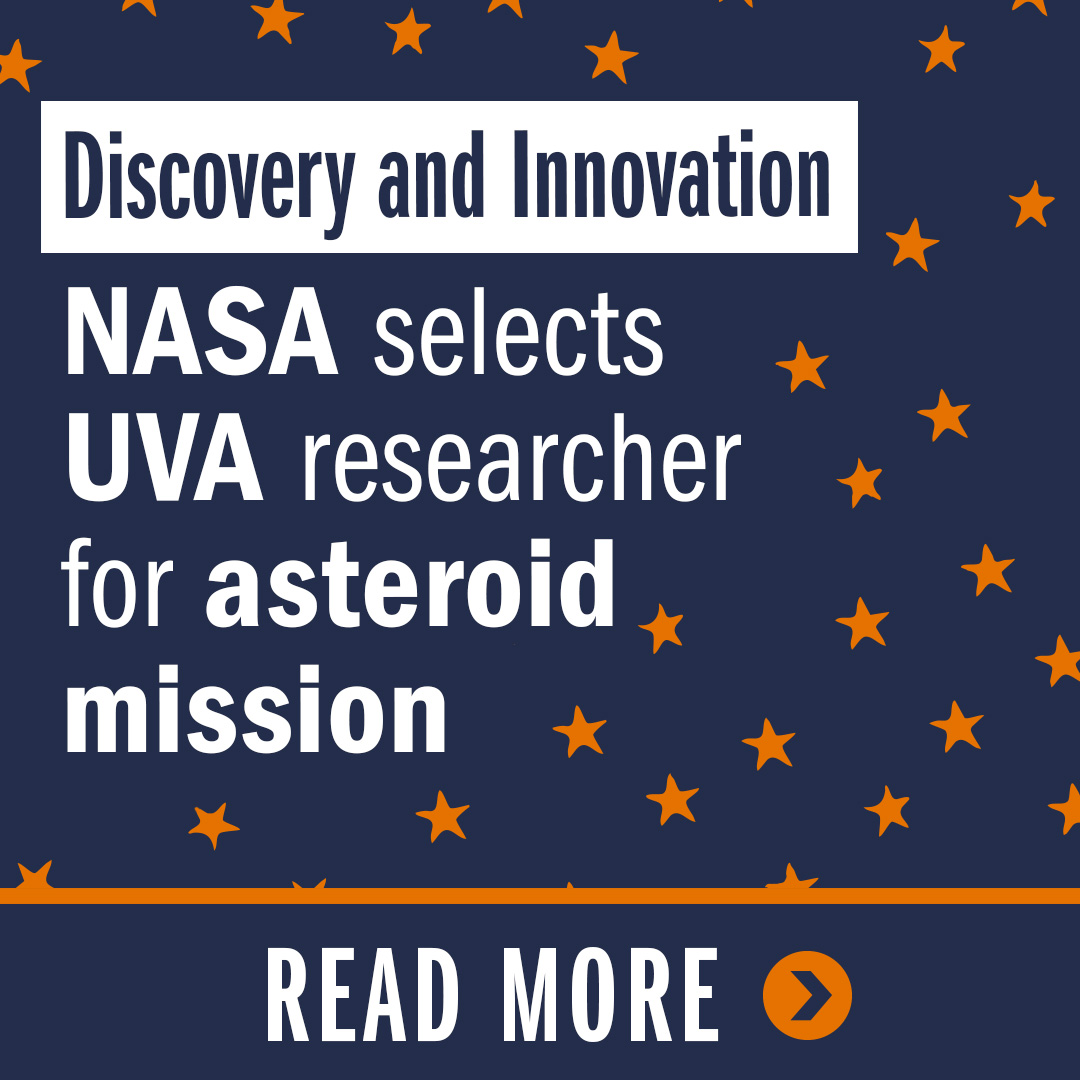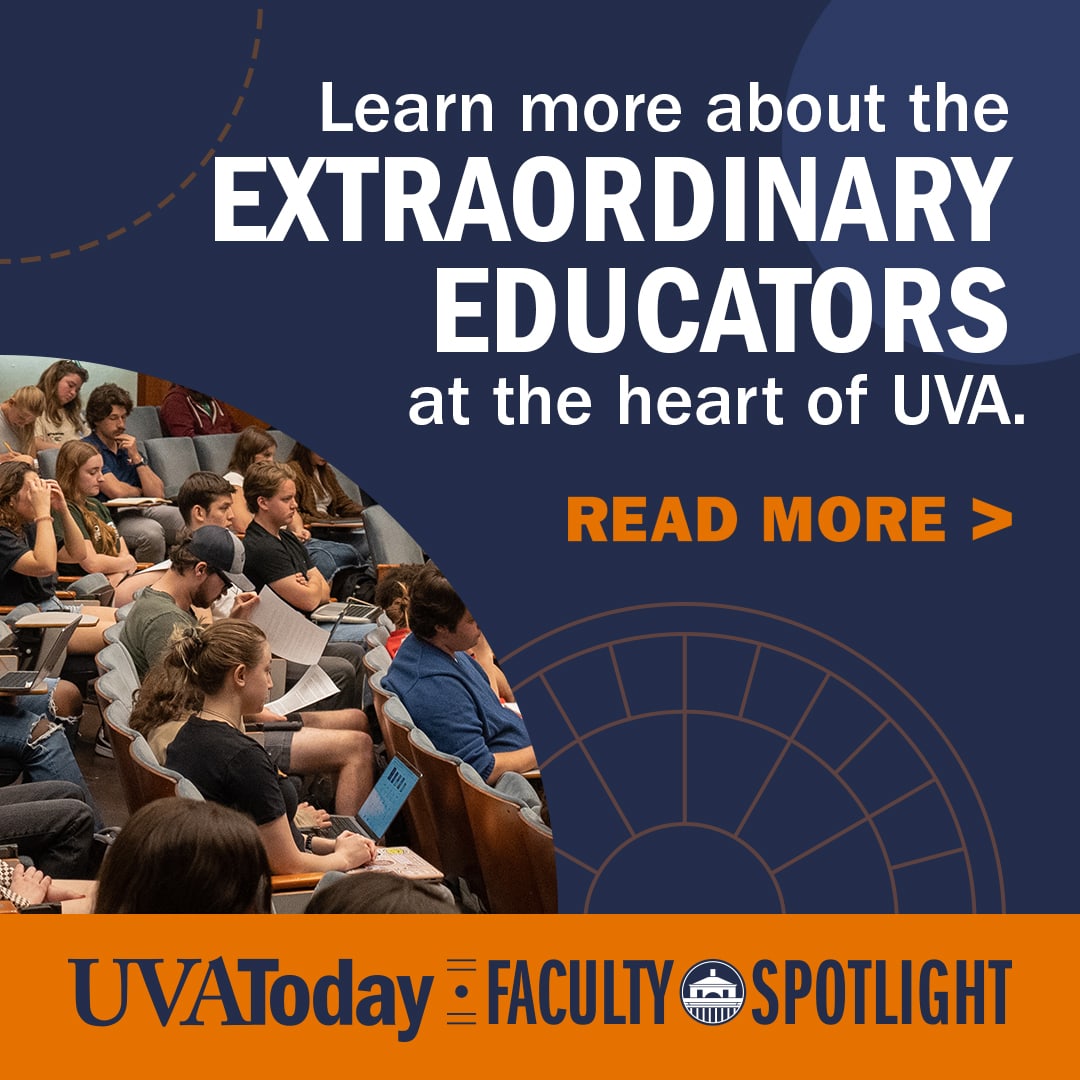After Charlottesville resident and University of Virginia employee DeTeasa Gathers began researching her ancestry a few years ago, a previously unknown relative contacted her and sent her an old photo of a distinguished married couple to whom she might be related.
Process for Building Memorial to Enslaved Laborers Also Builds Community
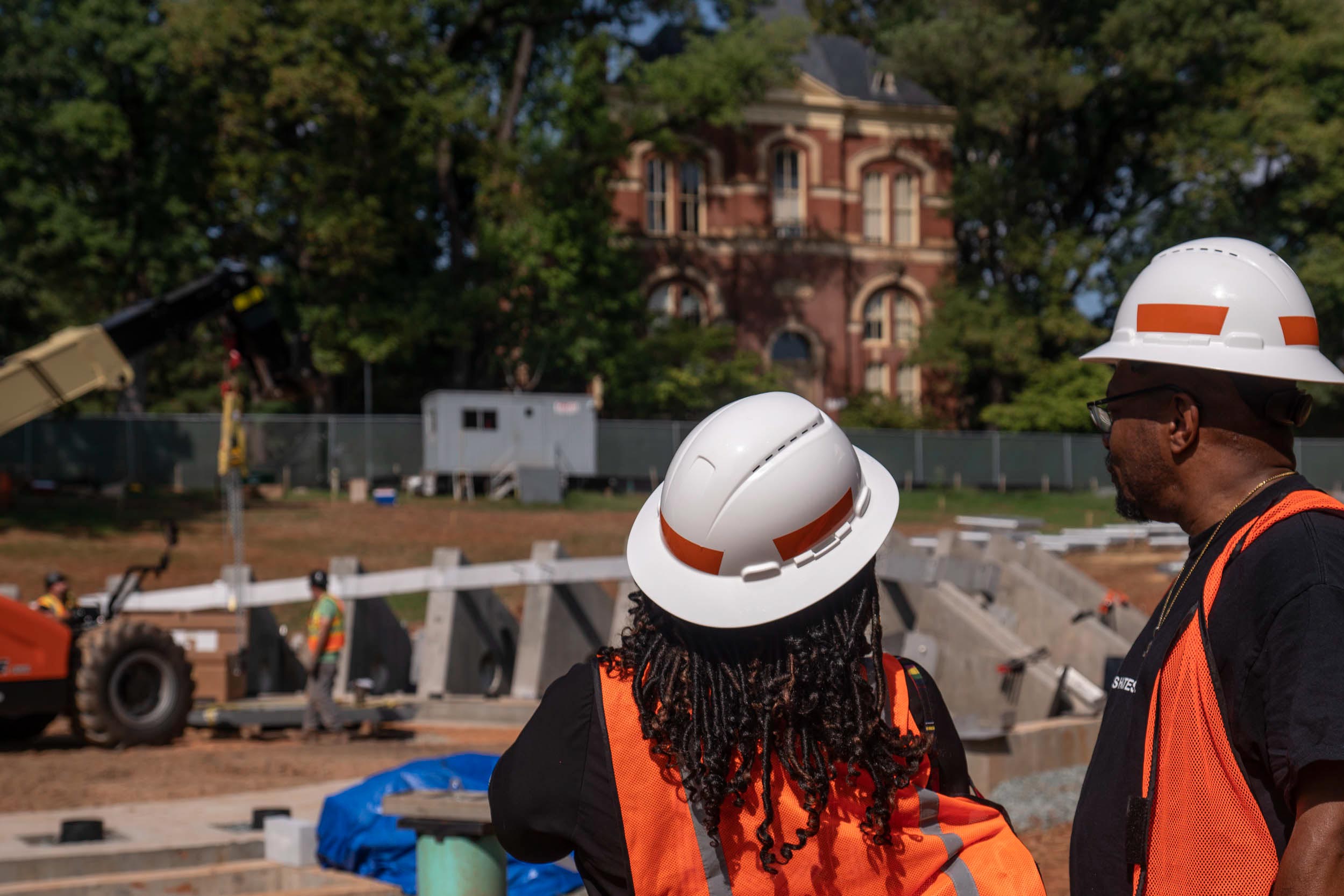
DeTeasa Gathers, a member of the Memorial to Enslaved Laborers Community Engagement Committee, and her husband Don Gathers watched the first stone of the memorial being hoisted into place on Wednesday. (Photo by Sanjay Suchak, University Communications)
Gathers was surprised by the family resemblance to the woman, who it turns out was her great-great-grandmother, Peggy Ragland Brown Spears. Gathers (whose single name was Brown) was even more surprised to find out that the photo is housed in the Holsinger Studio Collection in UVA’s Albert and Shirley Small Special Collections Library.
That photo is among those displayed not far from UVA’s iconic Rotunda as part of an exhibit at the site where the Memorial to Enslaved Laborers is under construction. Proposed by students 10 years ago, the idea for such a memorial garnered widespread support from not only UVA students, faculty, staff and administrators, but also people from the community – including Gathers, who is a member of Community Engagement Committee for the memorial.
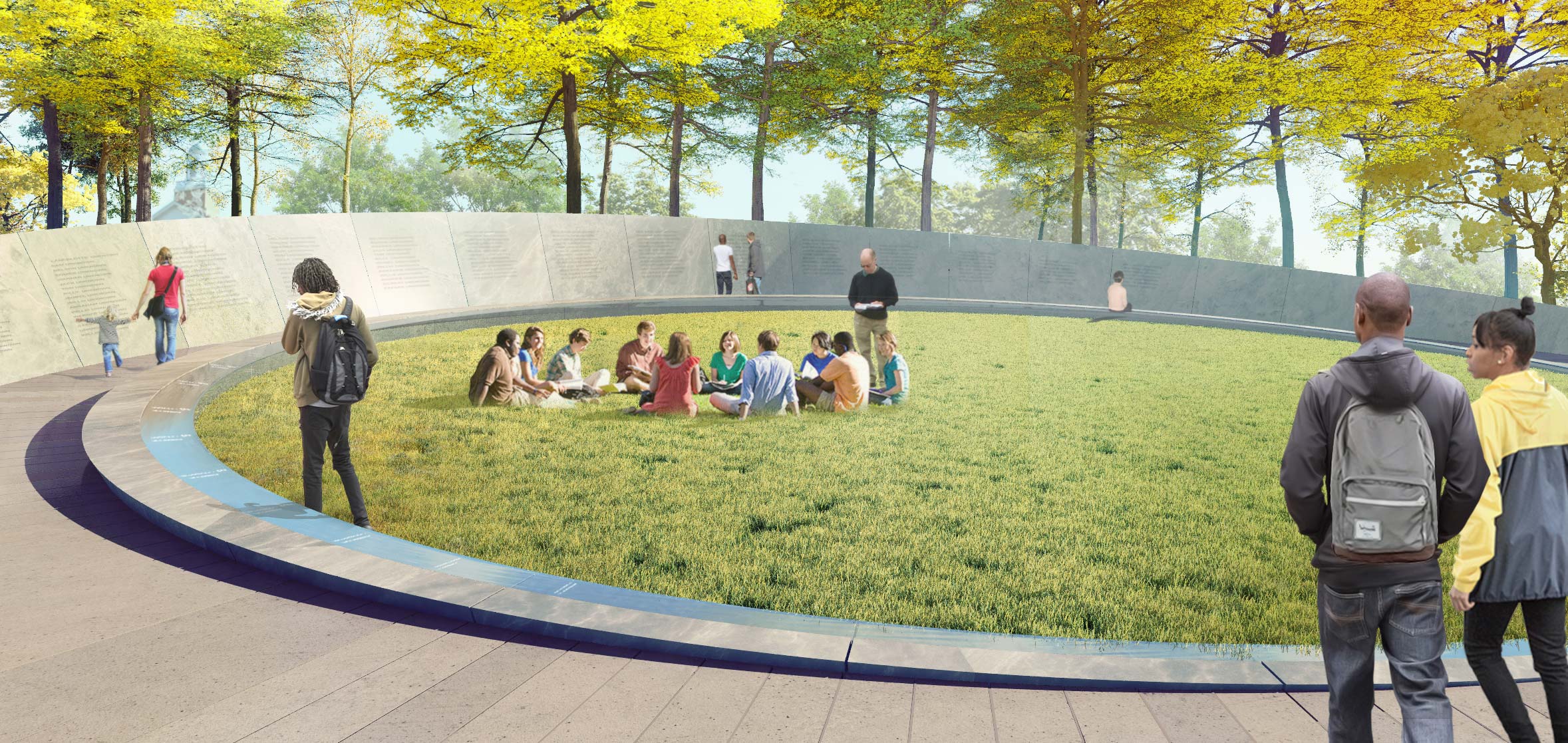
Once the President’s Commission on Slavery and the University began to pursue the idea for the memorial about six years ago, its members enlisted a range of stakeholders, including some people with deep ties to the local community and groups, such as the alumni IDEA Fund (IDEA stands for “inclusion, diversity, equity and access”) and University and Community Action for Racial Equity, or UCARE.
In fall 2016, the Board of Visitors selected the Boston firm Höweler+Yoon to design the memorial, and included as part of the design team alumna Mabel O. Wilson, an architectural historian at Columbia University who published “Begin with the Past: Building the National Museum of African American History and Culture”; Frank Dukes, co-founder of UCARE and past director of the Institute for Environmental Negotiation in the UVA School of Architecture; and Gregg Bleam, a landscape architect who has taught at UVA and worked in and around the University for about 30 years. The artist Eto Otitigbe came on board a couple of years ago.
Months of research and public outreach to the UVA community, alumni and Charlottesville-area residents informed the design of the memorial, which the Board of Visitors approved in June 2017.
“From the beginning, community engagement has been an incredibly important part of the process,” said Louis Nelson, an architectural historian at UVA who also serves as vice provost for academic outreach. In that position, he serves as the primary advocate and representative for community engagement, public service and academic outreach programs.
The 16-member Community Engagement Committee, which Meghan Faulkner, chief of staff in the Division for Diversity, Equity and Inclusion, chairs and coordinates, is overseeing and managing events related to the memorial, even as it is still being constructed.
“The MEL Community Engagement Committee is an extremely dedicated group of people who care deeply about making the memorial a space for truth-telling, gathering and reflection,” Faulkner said. “Our hope is that events at the memorial – educational tours, the dedication and beyond – are led and shaped by a truly collaborative process between UVA, the local community and the descendant community.”
Many people on the committee have lived in this area, work at the University, and even have generations of family members who worked at the University. Some have recently joined the committee, bringing expertise and experience in areas such as education and genealogy.
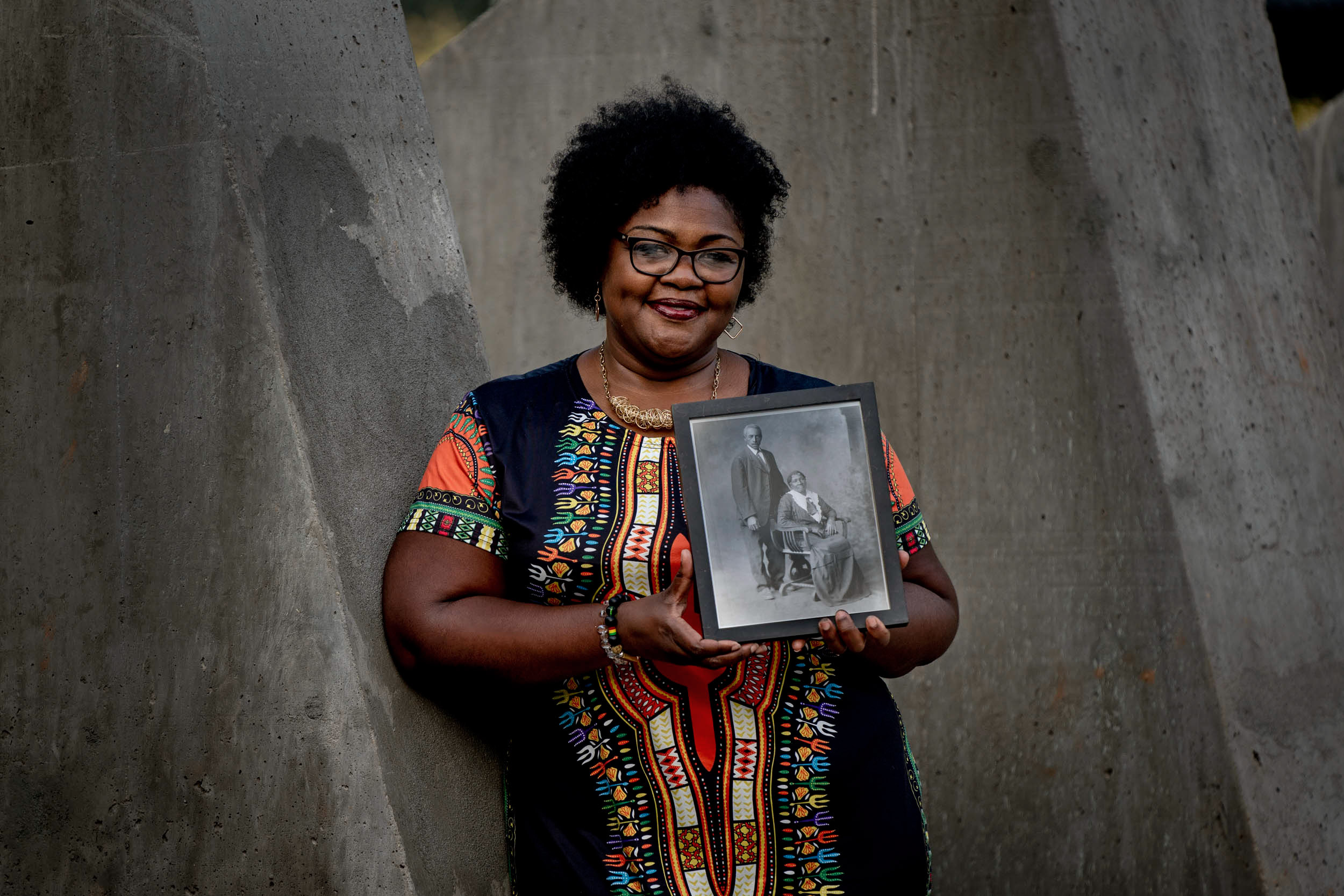
Charlottesville resident DeTeasa Gathers
Since she’s been involved with the committee, DeTeasa Gathers not only looks forward to the memorial’s completion, but also is looking back at UVA history with an interest she had not had before.
Gathers, who was born at the UVA Medical Center, is one of many people who have longtime ties to the University, as workers and neighbors. She and many family members, including her sister and grandparents, have worked for UVA. Her mother, now deceased, was a nurse trained in the UVA Hospital’s segregated LPN program, graduating in 1963; when the University honored these “hidden nurses” in April, Gathers received the certificate in her honor. Today, Gathers’ brother is also a longtime employee and her son is a UVA student and a member of the football team.
She said she is glad to be involved in the University’s effort to tell a fuller story about its complex history, especially African Americans’ contributions to the building and maintaining of the Academical Village in its early years and over time.
“I’m hoping it will help bridge the community and UVA a little more, so they have more respect for each other,” said Gathers, who works for the Department of Surgery.
Although she never cared much about history before, she said her interest has grown in recent years. She wants UVA to be more diligent about telling what actually happened and why African Americans were not allowed to be educated here for so long, and to recognize the worth of African Americans who worked for UVA. “They were devalued, but now, this will show their value,” she said.
Gathers plans to remain involved and wants to learn more so she can help tell the stories of her and others’ black ancestors on Grounds and in this area, she said.
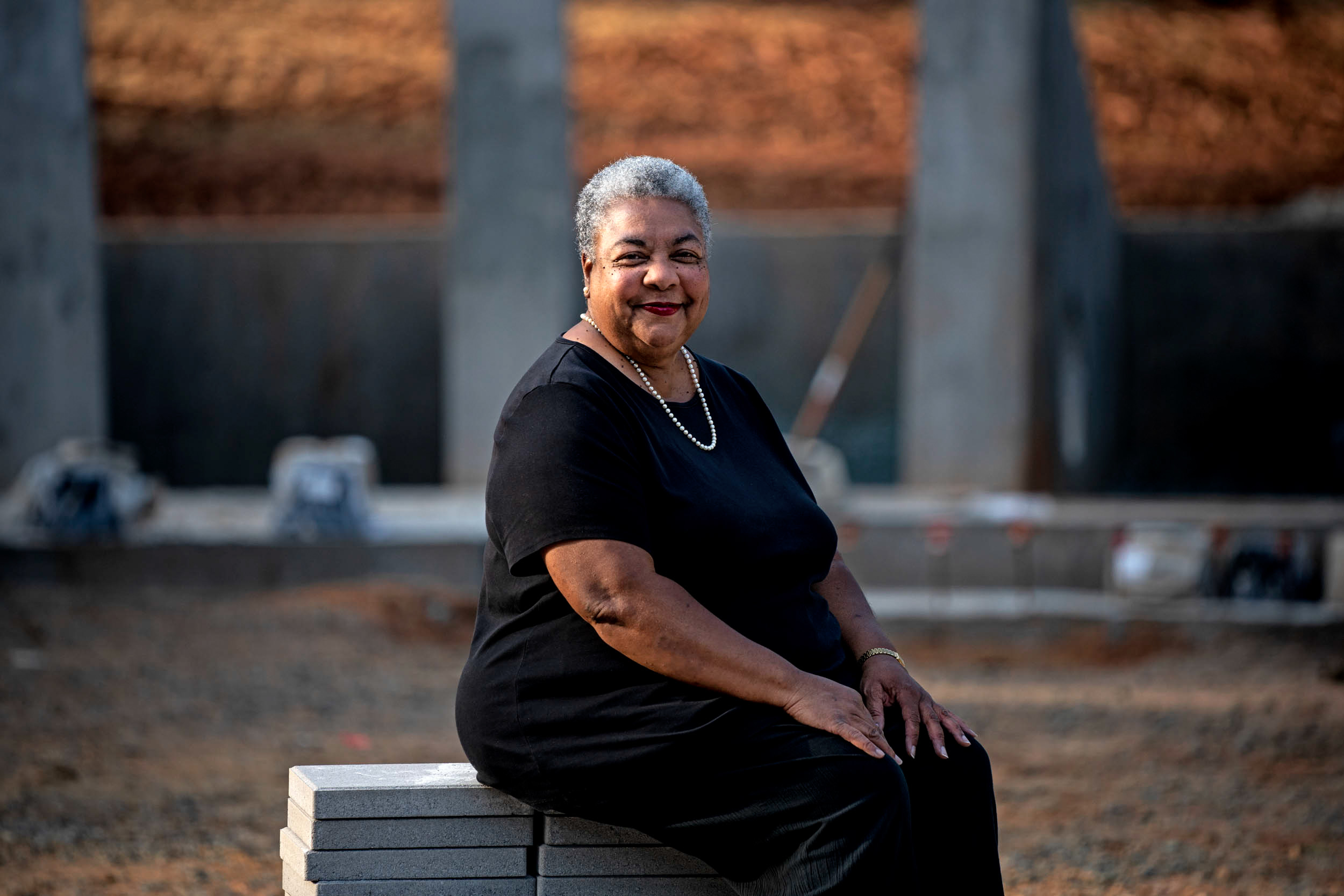
Descendant Cauline Yates
Cauline Yates is another community member who became involved early in the design and location process.
Born and raised in Charlottesville, she traces her ancestry back to the Hemings family of Thomas Jefferson’s Monticello; she is part of the “Getting Word” oral history project that the Thomas Jefferson Foundation, which owns and operates his former plantation, began 25 years ago. Enslaved laborers from Monticello were known to have worked on building the University.
When Dukes asked Yates if she’d like to attend the public meetings where designs, locations and aspirations were discussed, she didn’t hesitate. She later contacted the Community Engagement Committee’s Faulkner, concerned about where the memorial would be placed, and Faulkner invited her to join the committee.
“I’m glad all the ancestors will finally get this recognition,” said Yates, who works part time in UVA’s temporary administrative pool. She said she hopes people who pass by the finished memorial will think about the enslaved, some highly skilled, who built the Academical Village, and whose work wasn’t acknowledged. American history is African American history, she said.
“I hope the community of people who live here and people visiting here will learn from the memorial itself,” Yates said, mentioning how it’s being built with local granite, and will have Isabella Gibbons’ eyes always watching, etched on the outside of the larger ring. (Gibbons was a cook owned by physics professor Francis Smith who, after emancipation, became a teacher at the Charlottesville Freedmen’s primary school. A recently built dormitory was named in honor of her and her husband, William, who became a well-known minister.) The smaller ring will feature a water table and timeline of the history of slavery on Grounds; on the tall outer wall, the known names of enslaved workers will be listed.
“The Memorial to Enslaved Laborers will provide great opportunities for conversation and education,” Yates said.
“The memorial is a circle, a continuous ring never ending, an opening for people to step inside and contemplate, to learn what slavery was about. For the community, I hope it enlightens young and old, and reminds everyone that slavery was a very evil part of our history.”
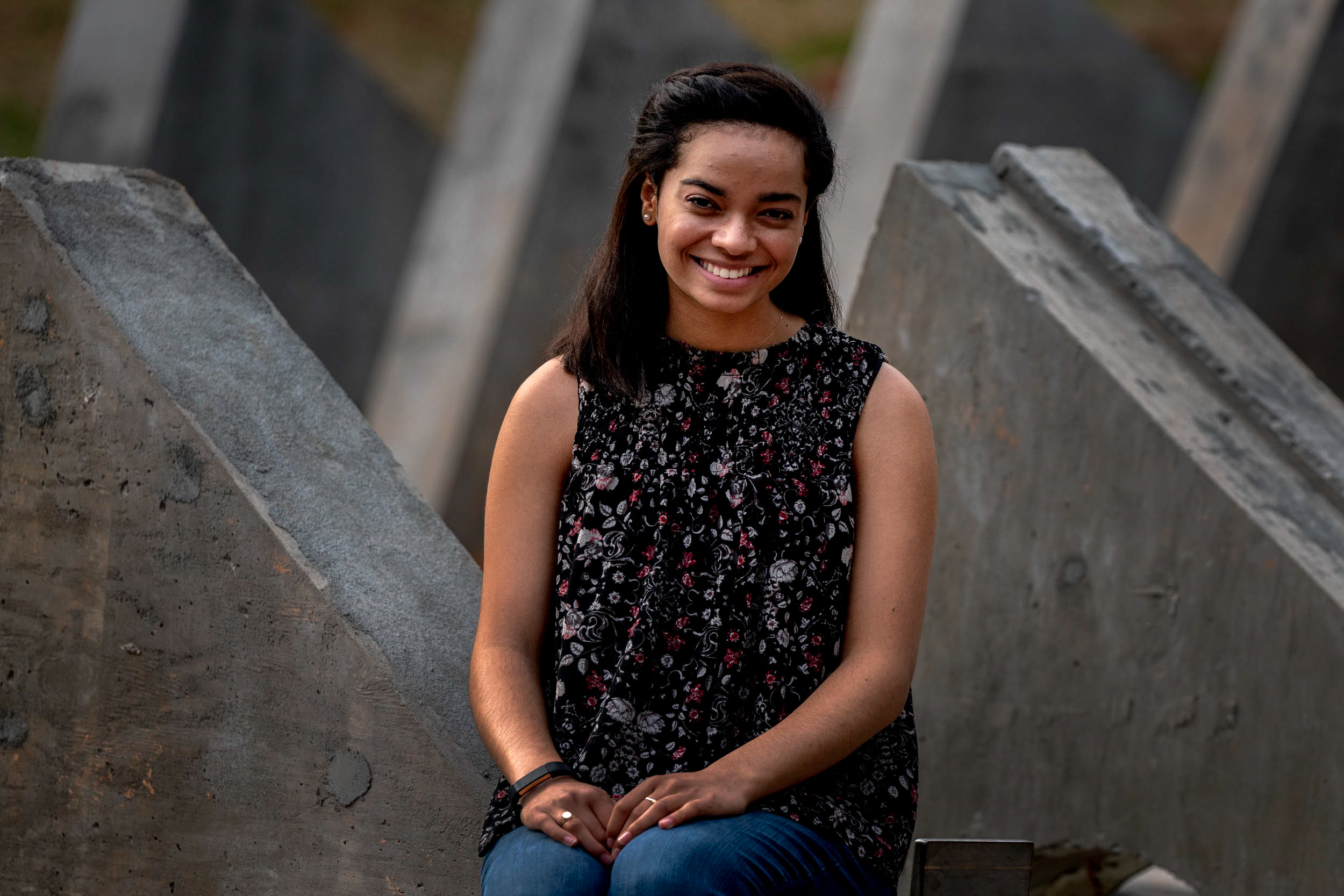
UVA student Jessica Harris
Jessica Harris, a fourth-year student pursuing a master’s degree after earning her undergraduate degree in three years as an Echols Scholar, joined the Community Engagement Committee after taking Dukes’ seminar, “Righting Unrightable Wrongs.”
Harris grew up in Charlottesville, and her father’s family has lived here for several generations; therefore, her perspective crosses many perceived borders.
“For as long as I can remember, I’ve often felt the tension between the Charlottesville and University communities,” she said. “As someone who proudly gets to wear both town and gown, I believe I have a certain responsibility in working to ensure thoughtful relationships and interactions between the two.”
Even the Community Engagement Committee meetings have been a wonderful experience where she said “the energy in the room is powerful, inspired and dynamic – one that has certainly motivated me to continue my reflection-turned-action in building a stronger bridge between UVA and Charlottesville.”
Harris, who is studying educational psychology in the Curry School of Education and Human Development, said by building the memorial, the University is taking an important step in acknowledging its past and changing its culture.
“The memorial for me serves as an important step in leading the University to more intentional action in addressing its racially fraught and oppressive past,” she wrote in an email. “It is a way through which I am able to acknowledge and honor the work that my ancestors contributed to the formation of this place we call home. It is part of a culture that community members, including my family, have longed to see the University begin to adapt, and I feel grateful to be involved during this time that feels so long-awaited.”
The Memorial to Enslaved Laborers can serve as an extension of the University, she said, a physical bridge inviting community members to Grounds and encouraging deeper interactions.
“I hope that the memorial stands as a symbol of the strides the University will take to address its complex history, and translates into actions and goals that move our communities into the next phases of reconciliation and restoration.”
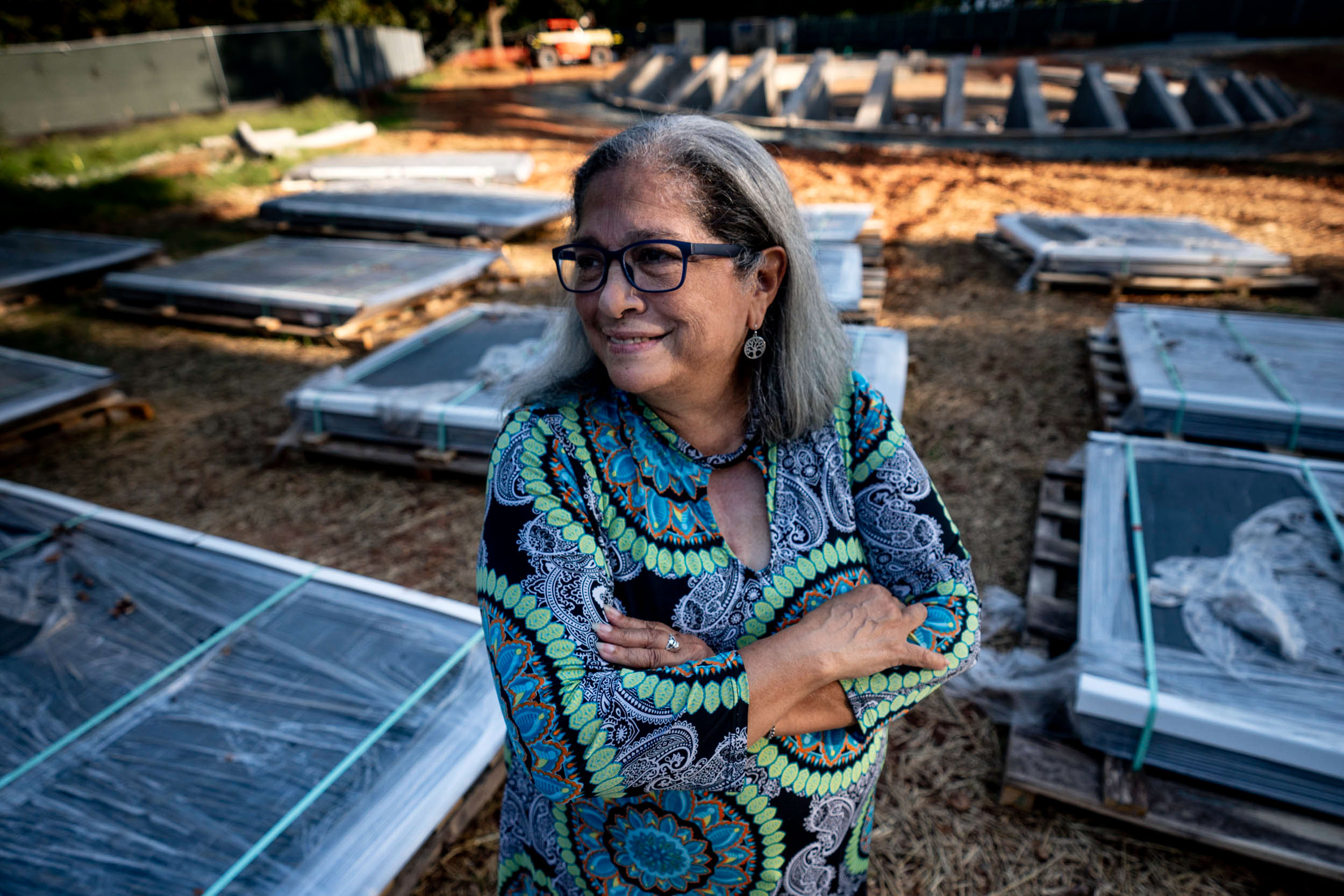
Genealogist Shelley Murphy
Further actions the University is taking to address this history include initiating a descendant outreach program, which included hiring Shelley Murphy, whose “passion for genealogical research” is going on 30 years.
Murphy moved from Michigan to Virginia – where she has deep ancestral roots – in 2003. She has worked in a range of nonprofit jobs, but calls this one “a dream opportunity.”
“There is nothing like being part of helping individuals and families learn about their ancestors, share some tips on research, and share the forgotten stories, and their contributions to the communities and the University,” Murphy said. The city and the surrounding counties all played a role in what was going on during those times.
Murphy has built more than 45 family trees, which helps to keep family lines organized. “Now it takes some time meeting descendants, doing the research and verifying the information,” she said.
A Facebook page, “Finding the Enslaved Laborers at UVA,” is a great tool for this work, where Murphy posts items that viewers can see and potentially contact her about. “I am also posting some of the steps I use, questions I ask and challenges that are faced when researching African American ancestry,” she said.
“There are a lot of myths on conducting slave-era research, and this is a way to combat some of those myths,” she said. One misconception is that you can’t find an enslaved ancestor, although it can be difficult if records were not well-kept or destroyed.
Murphy said you have to look where the ancestor was located. If they were enslaved, they were property, so you think of where the property records are and seek them out, she explained.
“One of my tips is to follow the money, land, water, community and the faith of the people,” she said.
“People should know the contributions that were made by enslaved and free laborers and what role their ancestors played. Some of these families probably had no idea their enslaved ancestor even worked on building UVA. They need to know – it’s their history, and it is community history.”
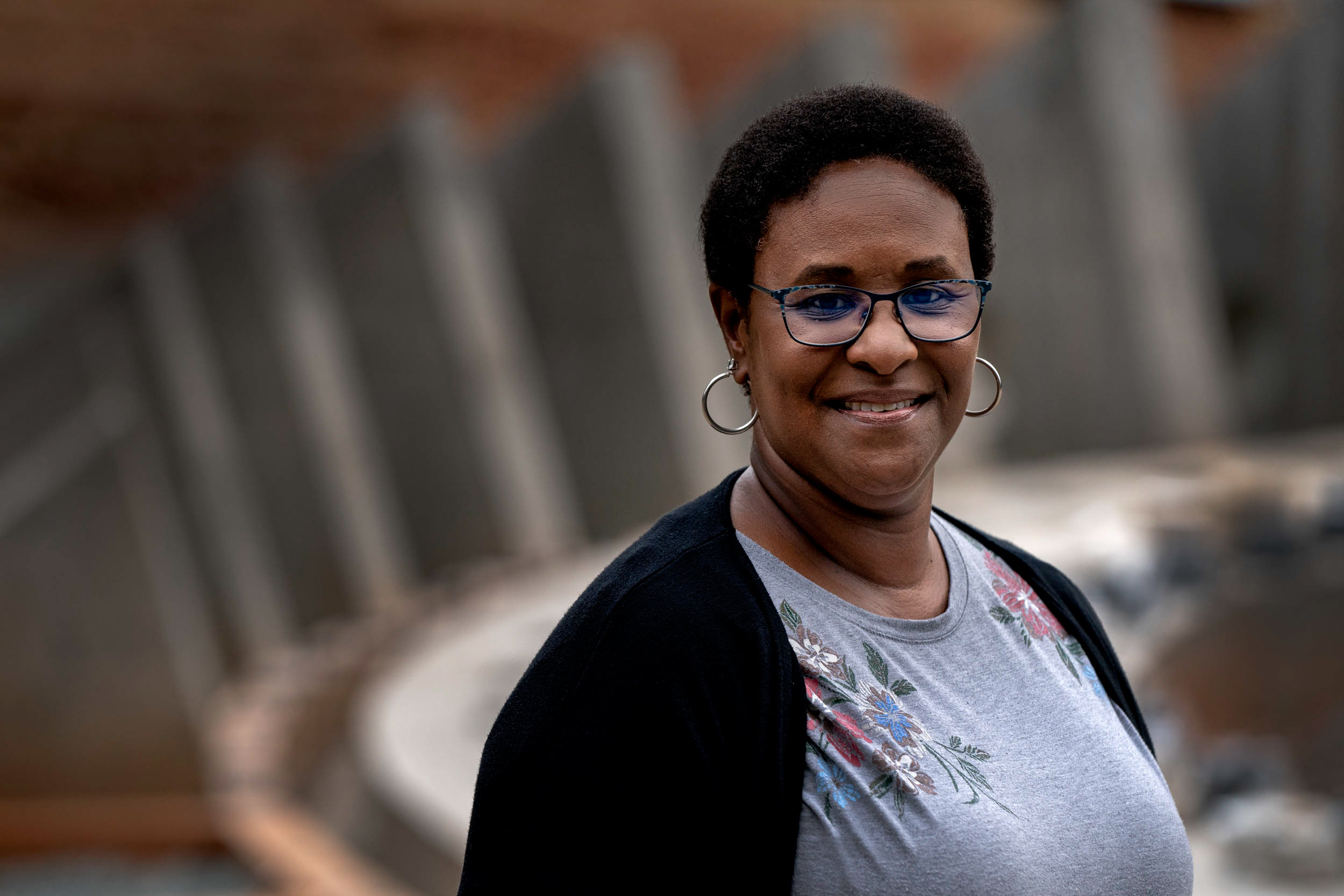
Educator Alexis Mason
Another charge of the President’s Commission on Slavery and the University was to increase educational activities, with the University offering several undergraduate courses and a summer program for high-schoolers in recent years. The completed memorial will both expand and continue to serve that effort.
Alexis Mason, an instructional coach in Charlottesville’s schools, joined the Community Engagement Committee about a year ago after discussing with Dukes her efforts to add content for teaching about race and slavery and its legacies in the area. Mason wants to help create more opportunities for members of the community, and especially educators, to see the Memorial to Enslaved Laborers as a resource of local history. She kicked off the school year and professional learning period with teachers touring the memorial site, and also is planning for student groups to visit.
“Many teachers have never been taught this history either, and they don’t have a clear understanding of what’s not being taught,” Mason said.
She started an initiative called “Reframing the Narrative” when she worked as a gifted resource teacher for Albemarle County. In that program, teachers participated in professional learning and field experiences at local sites to learn about the national and local histories of race and slavery, as well as African American contributions, with the hope that they will take their new knowledge back into their classrooms.
As the mother of three African American girls, one of whom is now a UVA student, Mason has made a point of exposing them to different perspectives in history beyond the dominant narrative, she said. “It’s incumbent upon the school system to be culturally responsive in its teaching and the [social] structures the children are exposed to,” said Mason, who grew up in Atlanta, where she said she was more exposed to this history.
Even before joining the Community Engagement Committee, she said her younger daughters learned about the memorial because members of the design team visited their school, including artist Eto Otitigbe.
Mason said the University’s construction of the memorial and other efforts show that the institution can be more transparent about how it has affected the community. Involving the community and descendants is very important, she said.
“I do hope the memorial will be a space for reflection and homage to be paid to the unsung heroes who built much of what we use today. It will be a place of prominence for legacy-building and collaboration with the community,” Mason said.
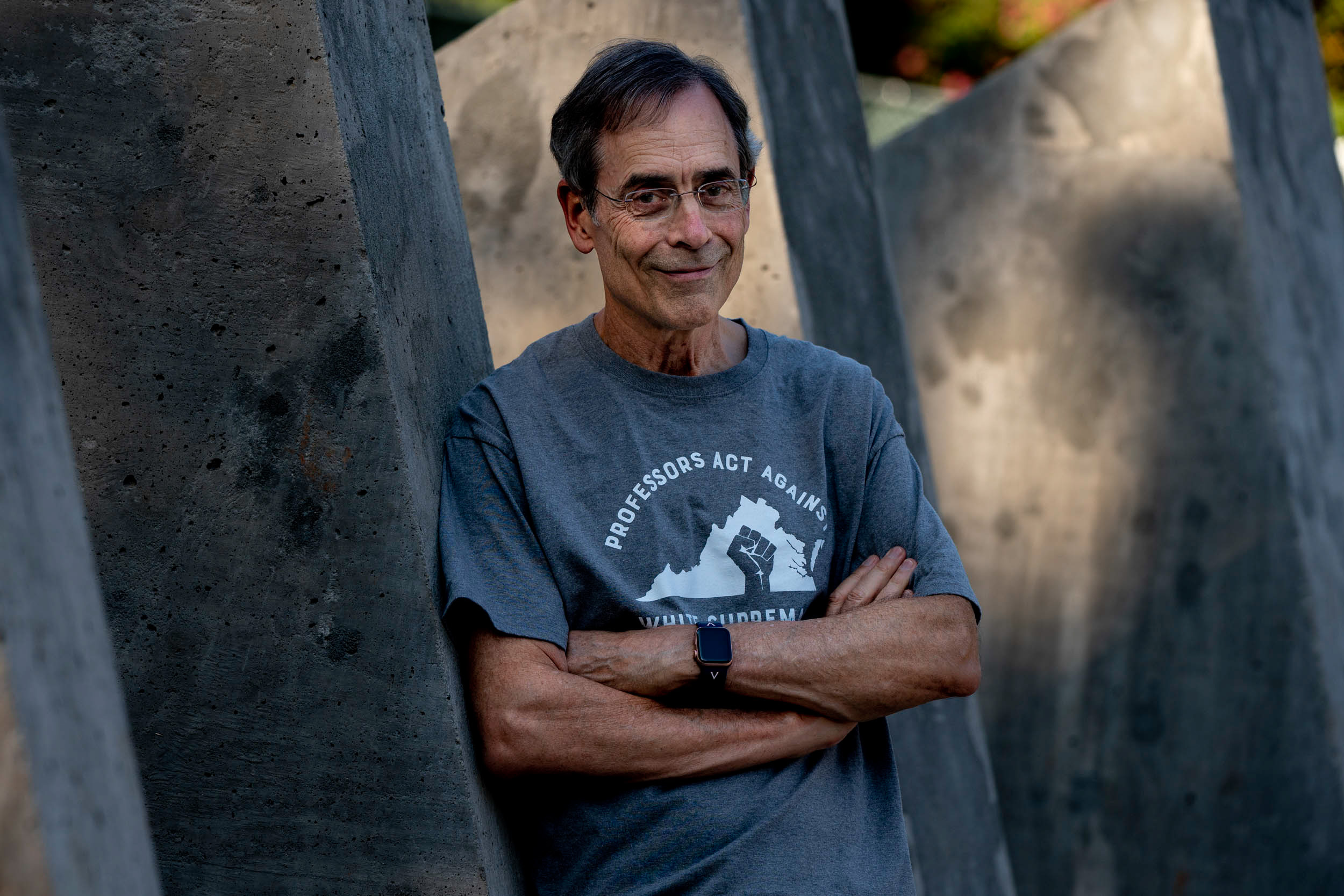
Faculty activist Frank Dukes
Dukes remembers telling a group of students 10 years ago that it would probably take many years for a hoped-for memorial to become a reality. Now he gives talks about how to conduct a productive collaborative process, complete with committing to community involvement.
Formerly the director, and now a faculty member, of UVA’s Institute for Engagement & Negotiation (formerly the Institute for Environmental Negotiation), Dukes became more involved in town-gown relations when he co-founded University & Community Action for Racial Equity in 2007.
He has given about 15 presentations – including for the National Park Service, and at national conferences and in classrooms – about “equitable collaboration,” providing training on how to bring people together on problematic spaces with the recognition that something must change.
From the fall of 2016 through the following spring, the memorial design team eventually brought six designs and three possible locations to meetings with various stakeholders and decision-making groups – community members, UVA students, faculty and staff, and black alumni. The team surveyed the community as well; in his talks, Dukes often shows a list summarizing public commentary.
Among the responses about the memorial’s purpose: Be prominent and highly visible; be a powerful educational experience, and also an emotional experience; include the known names of enslaved workers; show the pain of bondage and hope for the future; and forge connection with the community.
Creating the Memorial to Enslaved Laborers is just the tip of the iceberg, Dukes said. Another important element is finding and reaching out to descendants. There’s still a lot of research that needs to be done, he stressed.
Still, “It’s one of the best and most meaningful actions the University has taken in a long time,” Dukes said.
The Memorial to Enslaved Laborers Community Engagement Committee
- Cecil Banks, Office of the President.
- Dr. Robert “Bobby” Battle, Bicentennial Commission, School of Medicine.
- Carolyn Dillard, community liaison in the Office of the Vice Provost for Academic Outreach, Women’s Clergy Circle.
- Frank Dukes, Memorial to Enslaved Laborers Design Team, School of Architecture.
- Kellen Dunnavant, historic preservation intern.
- Joy Elmore, Division for Diversity, Equity and Inclusion.
- Tierney Fairchild, UVA IDEA Fund.
- Meghan Faulkner, chair, Division for Diversity, Equity and Inclusion.
- DeTeasa Gathers, community member, Department of Surgery.
- Jessica Harris, student (College ’19, Curry ’20).
- Sarita Herman, Facilities Management.
- Mary Hughes, Office of the Architect.
- Alexis Mason, Charlottesville City Schools.
- Kristin Morgan, Division for Diversity, Equity and Inclusion.
- Shelley Murphy, Descendant Project researcher.
- Louis Nelson, Vice Provost for Academic Outreach, School of Architecture.
- Cauline Yates, community member
*Personal protective equipment is required on all UVA construction sites at all times. An exception was made to facilitate these photos while under controlled circumstances.
Media Contacts
University News Associate Office of University Communications
anneb@virginia.edu (434) 924-6861

